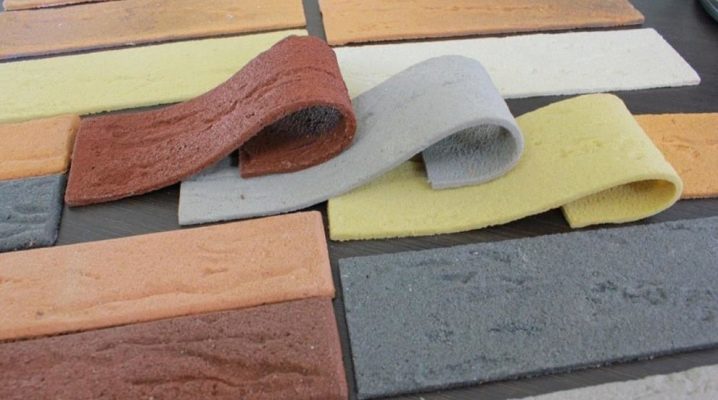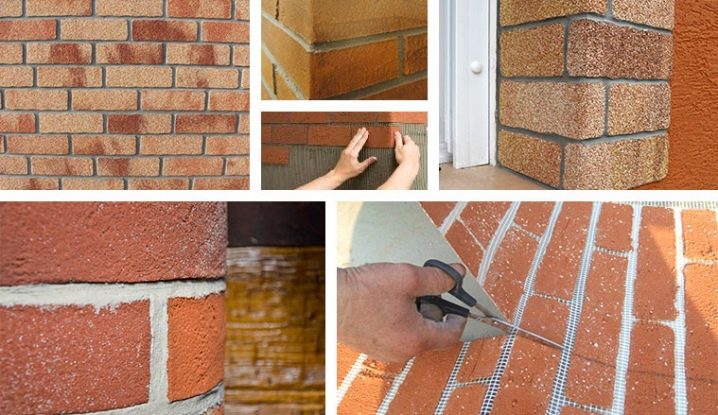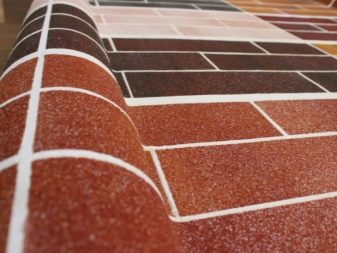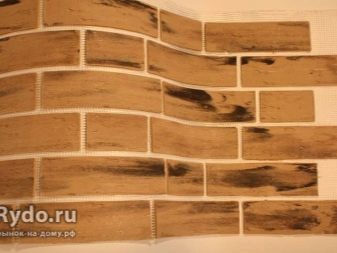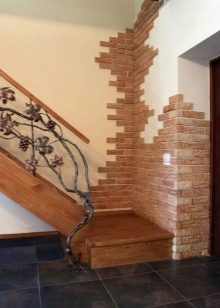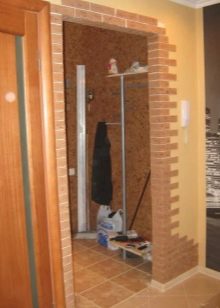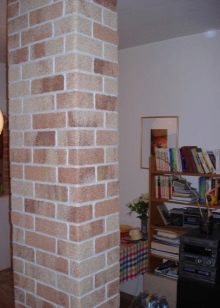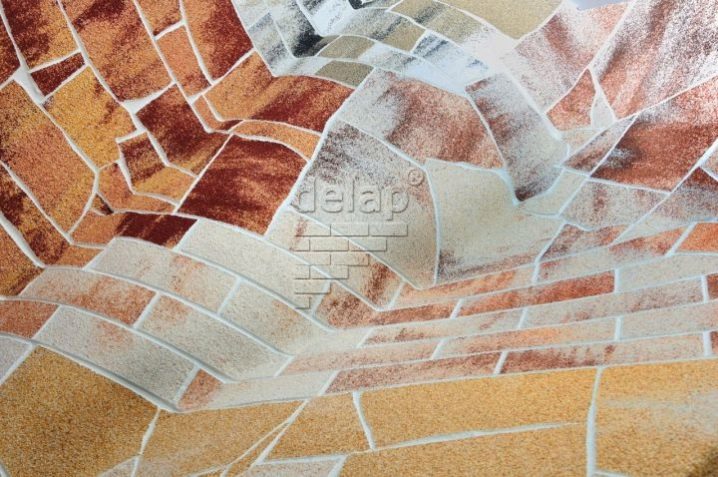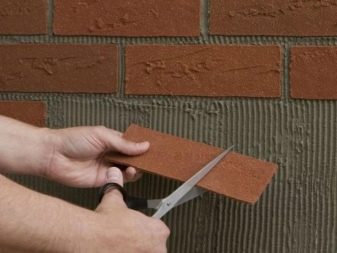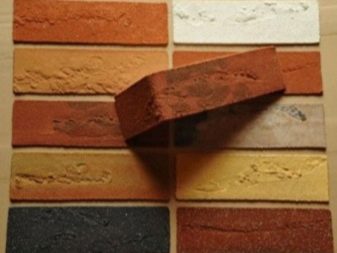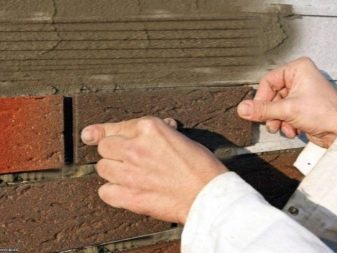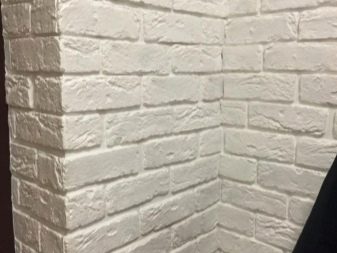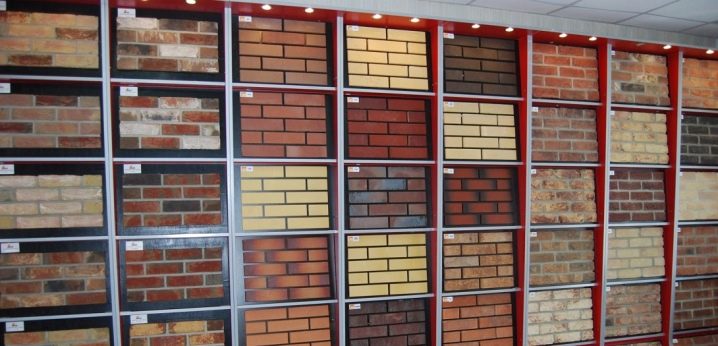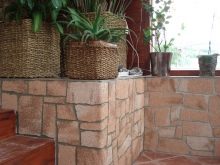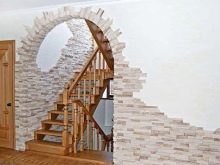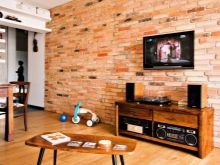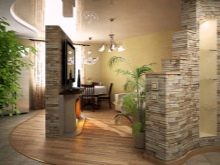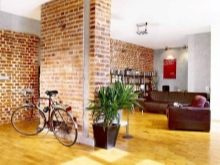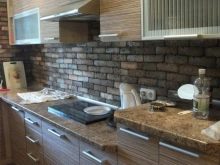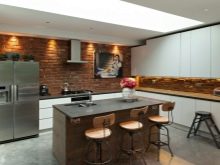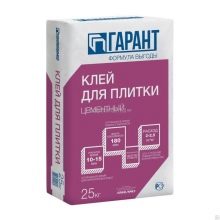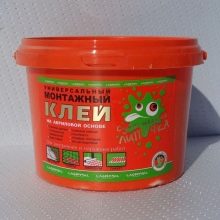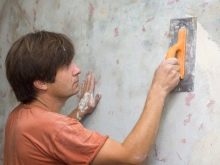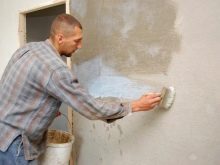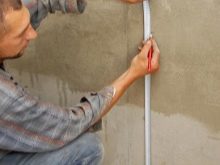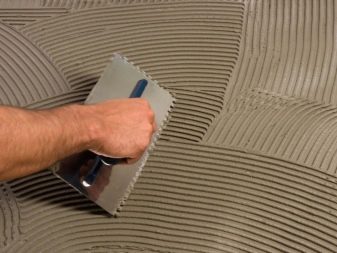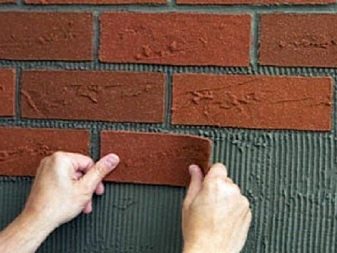Flexible tile: pros and cons
The choice of finishing materials for interior work is a responsible and difficult task. Exterior exterior, features of masonry and some other related factors - all this must be taken into account when carrying out repairs.
Despite the wealth of the market of finishing materials, flexible tiles are confidently holding the first positions.which is able to imitate many unusual and beautiful coatings. Of particular interest is tile, ideally copying brickwork. It can be used to decorate any room.
Basic properties
With incredible accuracy imitating brick, this material is equally relevant for both exterior and interior decoration. The excellent aesthetics of the tile, its good performance and relative ease of installation make it popular and popular.Repair with its use does not require special skills and knowledge - you can cope with it on your own. The tile smoothly lays down both on an immaculate surface and on the joints.
The material is supplied in the form of tiles of standard sizes. Their small width and flat shape make the installation process simple and convenient. Accurate imitation of bricks is possible due to the special composition that determines the other characteristics of the tile. It is based on the addition of acrylic, sand and special pigments in the sand-polymer solution. This not only achieves the characteristic appearance, but also the good resistance of the material to mechanical damage.
The entrance hall is most often faced with a flexible brick tile, but the kitchen and the balcony make it very competitive. In addition, it is trimmed with fireplace portals, column ensembles, as well as other decorative interior designs.
They like to use the material for placing accents of the point type. For example, it can be used to identify a door or window opening.
The tile is available in various colors, so it can be combined at its discretion.This way you can achieve interesting design solutions.
Advantages and disadvantages
Speaking about the advantages of flexible tiles, it is impossible not to note the following:
- tile is resistant to external influences and is able to withstand mechanical loads;
- it is environmentally friendly and completely safe from the point of view of toxicity;
- the material does not ignite, which gives a guarantee of safety in case of fire;
- the impact of steam does not have a damaging effect on the tile;
- her aesthetics and ability to imitate expensive or beautiful materials is very much appreciated;
- the external environment does not have a significant impact on the material, and even the sun's rays can not damage it over time;
- flexible tile serves for a long time, eliminating the need for periodic renewal of repairs;
- temperature effects do not affect the material - in the summer it is as strong and beautiful as in winter;
- it is easily and easily cut - anyone who likes to do repairs with their own hands will be able to do it;
- since repair with such a tile does not require any additional corner installation elements, it turns out to be economical and inexpensive;
- laying material is quite simple and does not require much time;
- Since a flexible tile is by definition resilient, it is well suited for any type of base.
As for the cons, they are much smaller:
- tile needs special care and attention, while it is impossible to wipe it with alkaline agents;
- for ultramodern interiors, such a facing material may seem inappropriate - it should be laid where it corresponds to the style and decor of the room;
- material is very expensive due to the fault of some manufacturers, which may inflate prices;
- it is better to acquire the entire required volume of the tile entirely from one batch, since from batch to batch the product may vary, and this can not but affect the appearance of the material;
- Unscrupulous suppliers of goods with poor quality can easily be misled by consumers, so you need to purchase certified products from large distributors.
As you can see, the advantages of a flexible tile far outweigh its drawbacks, so it is considered the most optimal and almost traditional choice for repair work in the kitchen, in the hallway or on the balcony.
Species
The market offers tile bricks with different markings.It can be purchased with RF, NF or WF. This or that marking indicates the specific size of the product. The dimensions of the tiles must be taken into account, after measuring the area of the room and marking it. For example, you can buy Ecobrick 210x50 mm.
Since there are as many manufacturers of flexible tiles as well as its color solutions, it’s easy to find a brick material even for an inexperienced consumer. The range of shades is so rich that the range is suitable for any room with its more or less expressive interior.
There are manufacturers who offer the buyer to order a specific color and tone of finishing material, which is immediately produced. However, there is a high probability that such a service will be more expensive than the finished option. In addition, the volume of the produced batch will be limited by production capabilities.
In addition to color and size, flexible tile is represented by varieties having different thickness, cost and external texture. It is not easy to choose from such a variety, but it’s definitely worth a try.
How to choose?
After it was decided to purchase flexible tiles and no other for cladding, before buying, it is worthwhile to decide once again with a number of parameters:
- The material should have such an appearance that would be harmoniously combined with the interior of the room in which it is supposed to make partial or complete repairs. The style and overall concept of the room should not be in conflict with the tile under the brick, which can both spoil it and supplement it, depending on the reasonableness of the overall "picture" of the room or balcony;
- the color of the tile should not be fully determined by personal preferences - it is also necessary to evaluate the overall gamut of the interior, since an abundance of colors can become a fly in the ointment, which will spoil everything;
- if the consumer wants the repair to become long-term, and the used cladding material has served for a long time, you need to pay attention to the proper quality of the purchased goods. It is unacceptable to make a purchase of a doubtful tile that will lose its color during the summer ultraviolet or will fall apart at a negative temperature;
- cost may be decisive for many consumers - in this case, you need to focus on the "golden section" - the bestbalance of quality and price;
- Pay attention to the composition of the product, too, will never be over. If the flexible tile will be used in a residential interior, its safety, the absence of impurities and additives in the composition of toxic, harmful to human health, is extremely important.
After the choice is made, you can proceed directly to the finish. But before you start the repair, you need to familiarize yourself with the options for using flexible tiles.
How can the material be used?
When planning repairs, you need to determine the goals for which the tile is used.
Most often it revets the walls in unusual and original rooms. Complicated structures that may be curvilinear and difficult to access are slightly less often. This is a variety of decorative elements such as fireplaces, arches, staircase steps, etc.
If we bear in mind the high resistance of the material to moisture, it becomes clear why many people use it in bathrooms and other rooms where water vapor suspensions do not make it possible to use other finishes, such as wallpaper.
Furniture facades are a rare but interesting basis for decoration.As a rule, these are kitchen sets, which turn out to be rather extravagant and unusual. These headsets easily fit into a stylish interior and bring to it a special chic.
In other words, flexible tile is used for various purposes and is able to realize the most courageous design ideas.
How to lay?
Installation of flexible tiles is a fairly simple process, subject to almost anyone. It does not require the use of special or expensive tools.
Be sure to pay attention to the choice of a suitable glue. It should be designed specifically for this material. The glue can be sold either as a finished mixture or as a dry powder, which must be diluted with the amount of water indicated in the instructions.
If the glue is purchased ready, you should start finishing immediately after opening the package.
Stages of installation:
- the wall must be prepared by leveling and thoroughly cleaning. Leveling mortar is used for abrupt transitions. After applying the wall must be primed. At the same time, the primer should contain antiseptics in the composition - in this case the base will adhere better to the tile, and the glue will manifest itself in full force;
- clutch quality will be much worse if the temperature in the room is below +5 degrees Celsius - you should take care to maintain the temperature above this value;
- wall must be marked under the tile;
- adhesive solution is applied to the wall in a uniform layer, while it should not be too thick - a thickness of no more than 2 mm is recommended. Apply glue with a usual trowel, and distribute it along a notched base;
- the tile is laid on the base in rows. In order for the drawing to be interesting, the 1st row must be started with a whole tile, and the 2nd row - with its half. This sequence must be followed further. Scissors are quite suitable for cutting tiles, as it is flexible and lends itself well to them. Care should be taken to ensure that the seams are of the same thickness everywhere;
- The advantage of a flexible tile is that the grout is not used to finish the joints - you just need to distribute the remains of glue with a brush.
The process of installing a flexible tile is not difficult and can be done by everyone. Without the extra cost of expensive tools, hiring specialists and additional repair materials with the help of flexible tiles, you can achieve a beautiful and interesting result.Especially since the feedback she has is mostly positive. It is only necessary to carefully consider the choice of material and instructions for its installation. If you meet these simple conditions, the result of the finish will please for a long time.
See below for a master class on laying a flexible tile.
